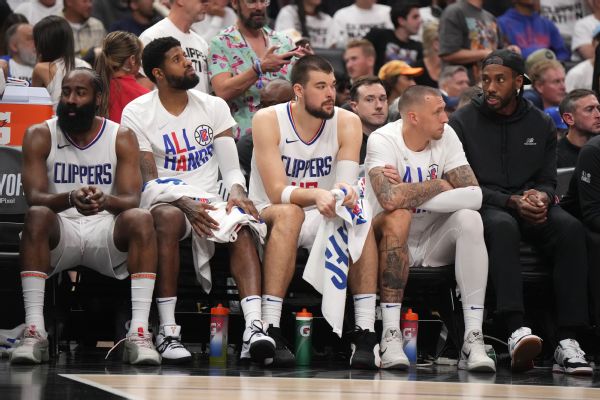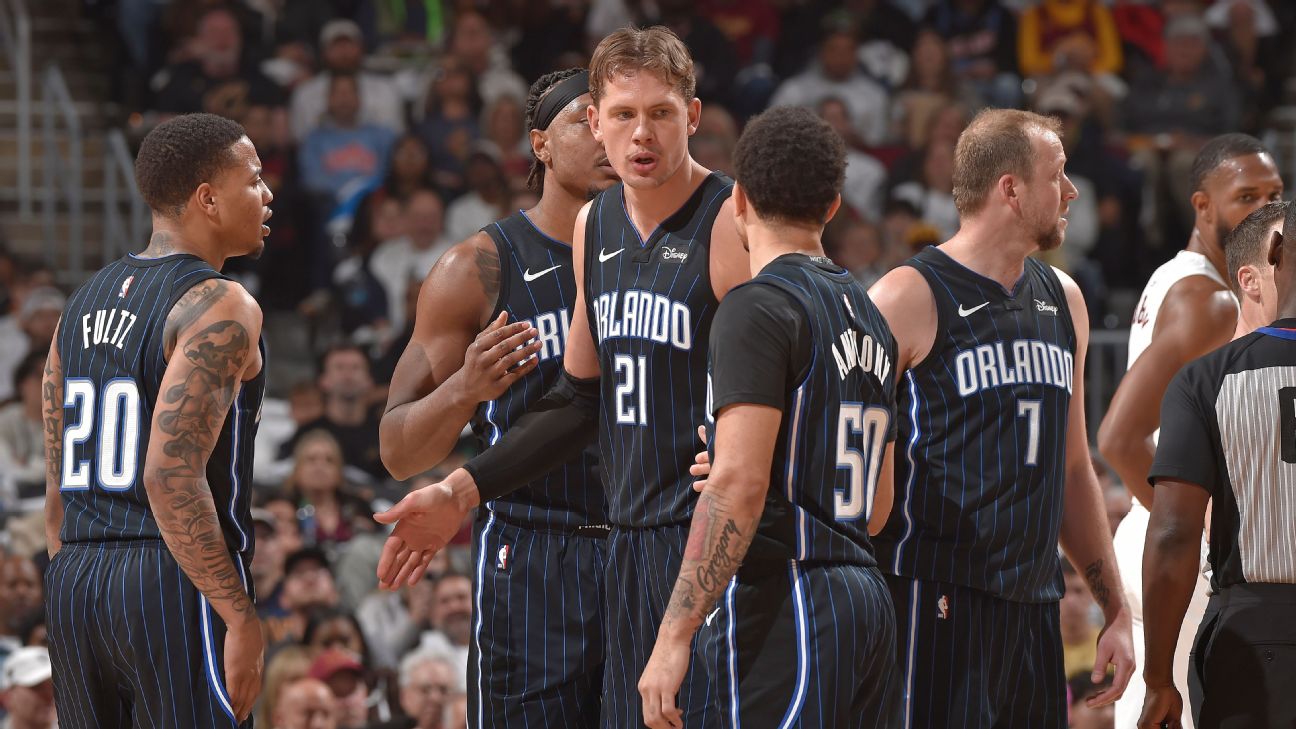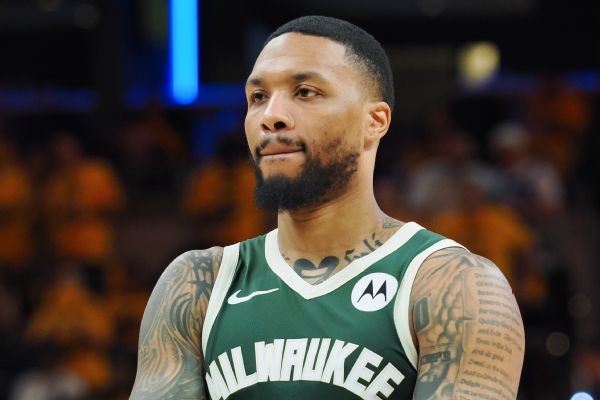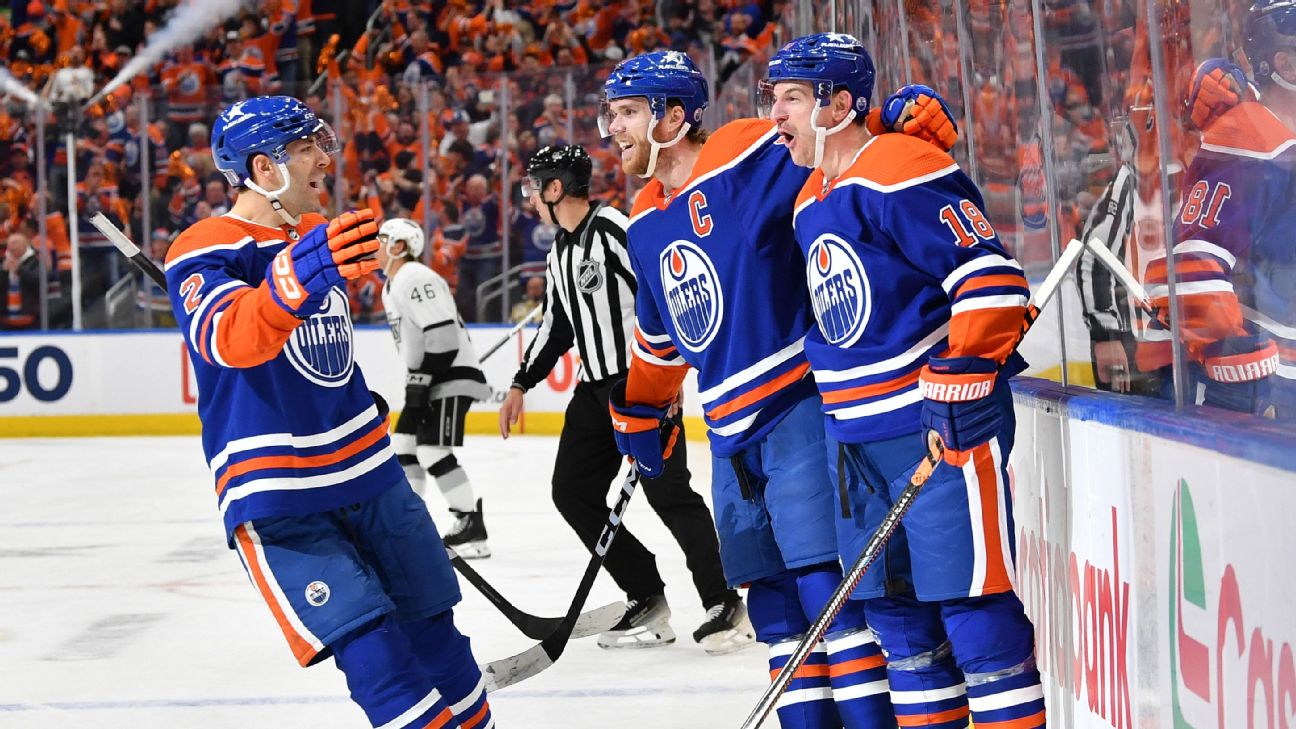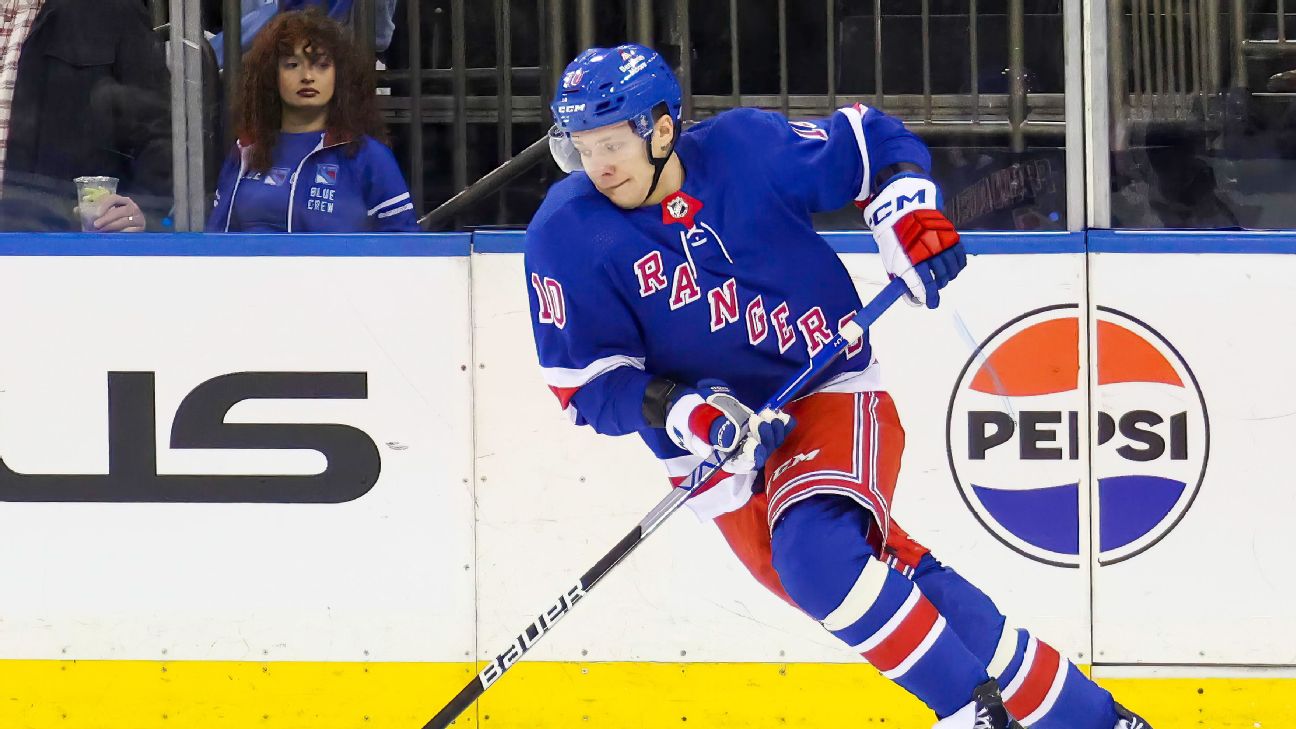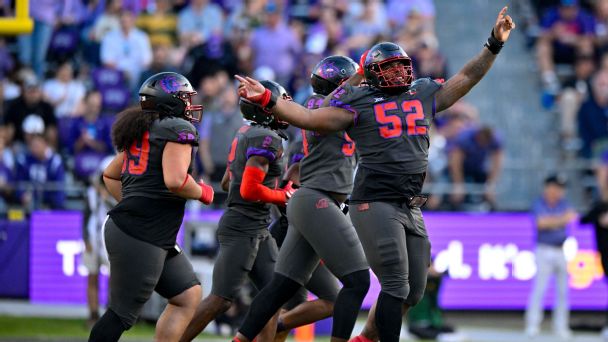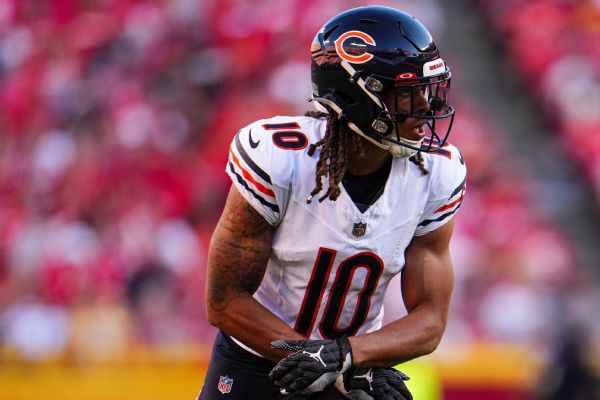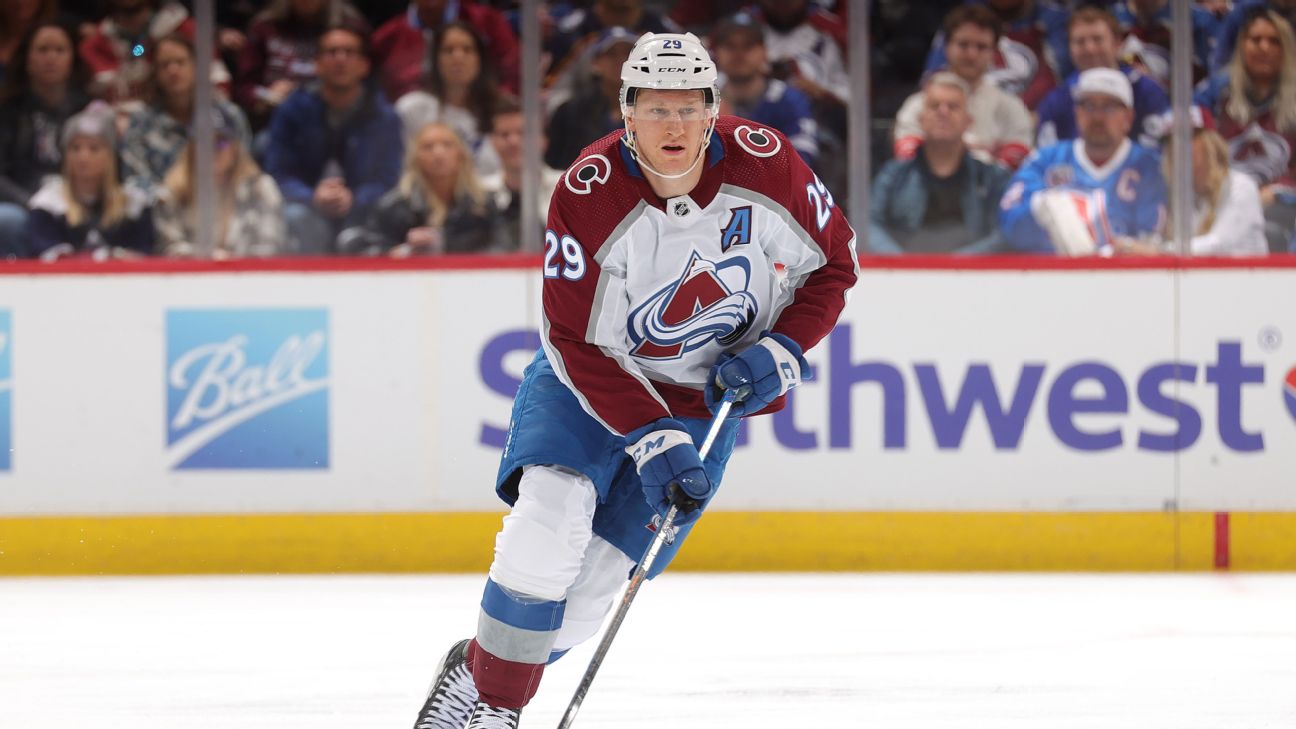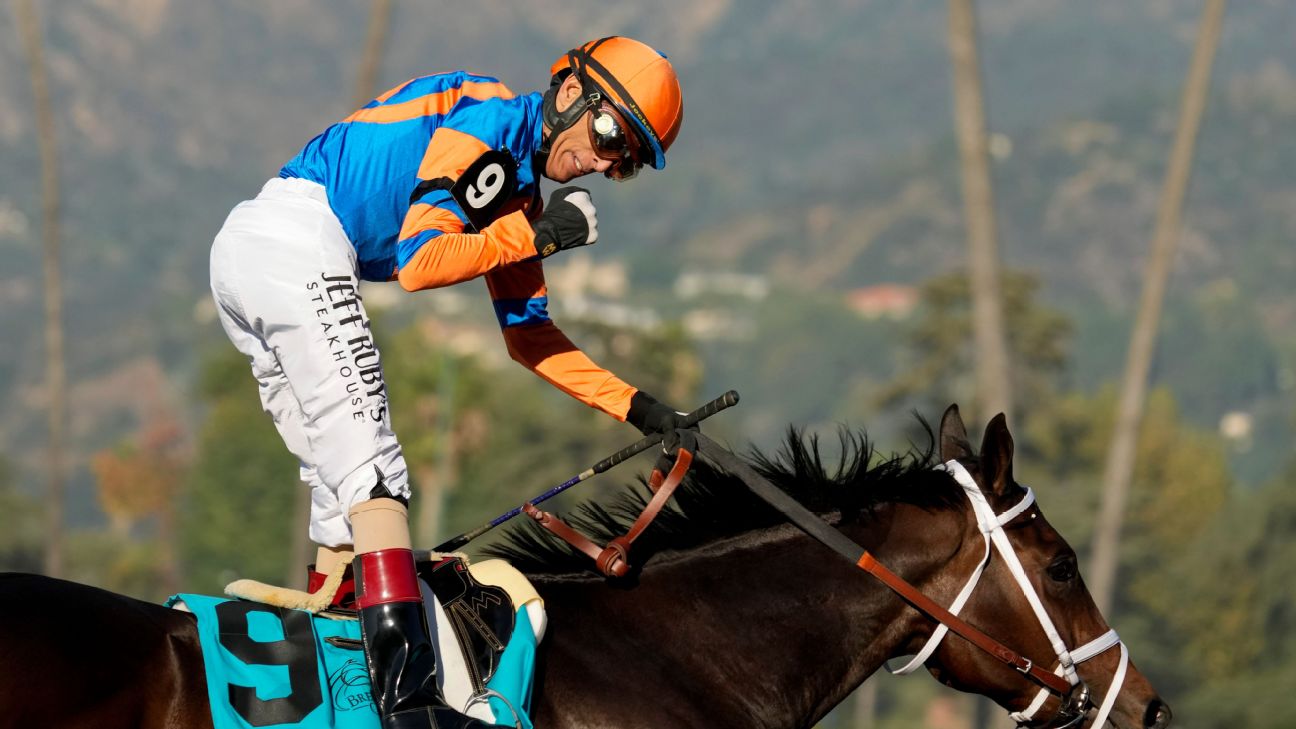![Erik ten Hag and Antony Man United Nov11-2023 [1296x729]](https://a.espncdn.com/photo/2023/1212/r1265218_1296x729_16-9.jpg)
Pochettino demands stupid exit rumours stop
It feels a little weird to be writing this after Manchester United just clinched their second FA Cup final appearance in as many years, but that's the stage we've reached in the Erik ten Hag journey: Even the wins are starting to feel like losses, though technically, Sunday's semifinal win wasn't even a win -- it was a 3-3 draw with Coventry City decided on penalties.
The last time Manchester United failed to win a game they were leading by three goals was May 19, 2013. After going up 3-0 within 30 minutes, they conceded twice to West Bromwich Albion on both sides of halftime, before re-establishing another three-goal lead, only to concede three goals in the final 10 minutes. That game ended 5-5 ... And it didn't matter at all. It was Matchweek 38, and United still won the Premier League by 11 points.
As a fitting point of comparison: It was also Sir Alex Ferguson's final match in charge. He'd helped push the club so far beyond everyone else that they could afford to blow a three-goal lead multiple times in a single match.
Fast forward to today, and Manchester United are blowing three-goal leads in knockout games they need to win, against the eighth-place team in the second-division league. So pyrrhic was the victory Sunday that as Rasmus Hojlund wheeled around the back of the goal to celebrate scoring the winning penalty, no one else on the team even bothered to join in.
• Stream live on ESPN+: Man United vs. Man City, FA Cup final (May 25)
Unlikely results have masked the team's poor level of play for a while now, but Sunday seemed to be the day when the whole world -- including the players themselves -- came to terms with the reality of the situation. Over the past two seasons, Man United have spent more on transfer fees than all but two other clubs in the world, Chelsea and Paris Saint-Germain. The end result? A team with a negative goal differential with only six games left in the season.
So, let's take a look back at United's squad-building approach from the past two seasons and see how it all went wrong. We've ranked all 16 signings under manager Ten Hag, including the transfer fee paid and their age when signed. In addition to statistical analysis, we're judging them by the thought process behind these moves -- which was too often based on who Ten Hag happened to have coached previously.
16. Antony, 22, forward: €95 million from AjaxAbout a year ago, I wrote this about the process behind the decision to sign the Brazilian winger:
At Ajax, he averaged 0.58 non-penalty expected goals+assists per 90 minutes (npxG+A/90) in the Eredivisie. That would rank 14th in the Premier League this season, but Ajax have a massive talent and financial advantage over the rest of the league, and the league itself tends to inflate attacking numbers of players before they move on to a bigger league.To pay nearly €100m for an Eredivisie attacker, you'd want his number to look more like Lionel Messi's than Gabriel Martinelli's.
Add in the fact that United were signing one of their new manager's former players, and it's really hard to think this was the kind of move any well-functioning club would ever make.
As for the outcome? It's been even worse. Antony has scored zero goals in the Premier League this season, while adding just one assist. The only remaining question here is this: Will Antony go down as one of the worst signings in the history of the Premier League, or in the history of the sport?
15. Casemiro, 30, midfielder: €70.65 million from Real MadridThis is the kind of move that -- well, OK. It's not the kind of move that you ever make. As I wrote last week, Real Madrid's current era of success stems largely from the fact that they stopped spending lots of money on older players. After spending a then-club-record fee on 28-year-old Eden Hazard, who went on to score four LaLiga goals in four seasons, they haven't spent a single dollar of transfer fee money on any players over the age of 24.
The reason you don't invest a ton of transfer money in a 30-year-old is simply that most players get worse once they enter their third decade, and it's difficult to predict the ones who won't. So, more often than not, a 24-year-old is going to give you both better immediate and long-term performance. Plus, for accounting purposes, younger players offer the potential of another transfer fee somewhere down the line.
Due to all of this, younger players typically cost a lot more money. Yet somehow, United made Casemiro the fourth-most expensive midfielder of all time at the time of his move. They then also made him one of the highest-paid players in the Premier League.
If United were on the verge of challenging for a title, you could at least squint and understand them making a win-now move and signing an aging star for something like €30 million to put them over the edge. But they paid more than double that, to bolster the midfield of a team that had just finished 35 points back of first place.
This one went about as well as these types of moves tend to go: Casemiro was frequently very good last year, and he's spent most of this season either being injured or terrible.
14. Sofyan Amrabat, 27, midfielder: €9 million loan from FiorentinaSix of the 16 signings since Ten Hag took over have been loans. The team-building philosophy over the past two-ish years seems something like a "stars and scrubs" approach, where you spend top-of-the-market money on a couple players, and then attempt to fill in the cracks with either older guys or players whose parent clubs are willing to let them leave for a season.
Amrabat sits somewhere in the middle: United paid nearly €10 million to acquire his services for a single season, with an option to make the deal permanent for about €25 million. This move sits ahead of the Casemiro transfer for the comparative lack of cost, but again: This is a win-now type player who also carried a good deal of risk. Playing midfield in Serie A (or in the World Cup, where Amrabat starred for Morocco) is much different than playing midfield in the Premier League.
At Fiorentina, Amrabat was a very good passer, but contributed little elsewhere -- especially off the ball. In the Premier League, where the ball moves faster and there's less time on the ball, he hasn't been as effective in possession and to make matters worse, all of his other struggles have been amplified. According to FBref, he's completed two progressives passes ... In all of 2024.
The other red flag here: Amrabat was coached by Ten Hag at FC Utrecht.
13. Wout Weghorst, 30, forward: €2.96 loan from BurnleyWe can only rank cheaper loan moves so low, and pretty much every loan move for a striker ends up not moving the needle at all. But I don't really know what signing a 30-year-old who struggled for a relegated Burnley team the season prior was supposed to accomplish.
Weghorst actually played a lot, somehow starting in midfield for Ten Hag's signature result -- a 2-2 draw at the Camp Nou to advance past Barcelona in the Europa League Round of 32 -- but he didn't score once in 17 Premier League appearances.
12. Mason Mount, 24, attacking midfielder: €64.2 millionIt's easy to forget, but back in 2021, Mount was a starter for the Champions League winners and the semifinalists of that summer's European Championship. The following campaign, he dropped a 10-goal, 10-assist season at just age 22. Ahead of the following season, I ranked him 14th among all players in the Premier League.
If you wanted a little more control over the game, you could play him as a winger. Want to open it up? Drop him back into the midfield. It looked like he'd be a Premier League star for another decade ... And then last season happened. He scored three goals and assisted just two, really struggling in a Chelsea team where almost everyone else struggled, too.
With Chelsea's new owners looking to fully implement their new team-building model and Mount entering the last year of his deal, he seemed like a potential bargain signing: shouldn't cost much because his club needed to move him on, he'd had a bad year and you'd just be buying out the final year of his contract. Instead, United made him the eighth most expensive signing in the league last summer.
I wouldn't write off Mount just yet, especially if he gets a chance under a more tactically effective manager at Man United. But in some ways, the acquisition of Mount is symbolic of the larger way this team has been built: If you hit your best-case scenario, you'll be fine, but anything else and it seems like a complete disaster.
11. Sergio Reguilón, 27, fullback, loan from TottenhamThis is a tough player to rank. United needed fullback depth after a bunch of injuries, and bringing in Reguilon at the last minute to provide something like league-average play was a competent move, given the circumstances. He's not a game-changer or anything, but you can get by with him as one of your defenders.
Reguilon played 400-plus Premier League minutes for United in the first half of the season. But then they terminated the loan, it seems, because Ten Hag thought that Luke Shaw and Tyrell Malacia would be returning from injury to play out the rest of the season.
Reader, they did not. Shaw briefly returned to play four Premier League games in February before getting re-injured against Luton Town at the end of the month. Malacia, meanwhile, is not expected to play this season. Reguilon has since become a starter for Brentford.
10. Martin Dúbravka, 33, goalkeeper: €2.3 million loan from NewcastleDubravka's loan was cut short halfway through last season. He started two Carabao Cup matches and played zero Premier League minutes. Should it be this hard to find a backup goalkeeper?
9. Jonny Evans, 36, center back: No transfer feeOn the one hand, I don't think Man United should've ever let Evans leave in the first place. On the other hand, I don't think they should've brought him back when he was older than me.
There's nothing wrong with filling out your squad with veteran players, but it's unclear how a physically limited center back is supposed to fit into a team that theoretically wants to press and push its back line high up the field.
8. Jack Butland, 29, goalkeeper: loan from Crystal PalaceBrought in to replace Dubravka, Butland didn't play a single minute in the Premier League before joining Rangers six months later, but at least United didn't have to pay a fee.
7. Marcel Sabitzer, 28, midfielder: loan from Bayern MunichHe gave them a body in midfield, and he played 600-plus Premier League minutes as the team clinched a top-four finish. When his loan ended after five months, he signed with Dortmund. Overall, a totally fine, totally forgettable move. United could use some more of those, frankly.
6. Christian Eriksen, 30, midfielder: No feeIn a vacuum: another totally fine move! He's old, but there was no transfer fee. Plus, research suggests that skilled players do age a bit better than athletic players, and Eriksen certainly falls on the former end of the spectrum. For a team with United's resources, there's nothing wrong with bringing in one of the better passers in the world to fill out the squad.
The issue, though, is that he ended up becoming quite important to the team. He played over 2,000 minutes last year -- more than in any season since 2019 -- but when you pair Eriksen with Casemiro, you've suddenly built a midfield around two players who might decline at the same time. That's exactly what's happened this year.
5. Altay Bayındır, 25, goalkeeper: €5 million from GalatasarayWho?
Before joining Man United last year, Bayindir was the starting goalkeeper for Fenerbahce for four years and then the starter at another Super Lig club, Ankaragucu, for a season before that. Goalkeepers age and peak much later than outfield players, so it's rare for someone of Bayindir's age to play so many minutes in goal for a team that was constantly playing in Europe.
This is a low-risk, high-reward move -- the opposite of most of the other entries on this list.
4. Lisandro Martínez, 24, center back: €57.37 from AjaxAnother former Ten Hag player! All in all, four of the 16 players -- a full 25% -- signed under Ten Hag played for Ten Hag at one point in the past.
Basically, this means either one of two things is true: 1) Manchester United, who can afford just about any player on the planet, are limiting their scouting searches to players with a connection to their current manager, or 2) Manchester United hired a manager whose past success was largely driven by uber-talented players who were good enough to be playing for a team with hopes of winning the Premier League.
With the former, you're not signing the best possible players for your team. With the latter, you've hired a coach whose past success hinged on a specific set of talented player personnel. Neither one is ideal.
Martinez, though, was another fine signing. It's not a ton of money for a young, starting center back. When he's played, he's been good. Not a short-king superstar and not too short to play in the Premier League -- just an above-average Premier League center back. The issue is that for a center back, he hasn't played all that much. Across nearly two full seasons, he's featured in just 40% of the Premier League minutes. For a center back, you'd expect that number to be at least double that.
I'm not sure you could've predicted Martinez's lack of durability, but since Ajax were so dominant in the Eredivisie, they never needed him to play every minute of every game. Even though it ended up being just 62% of the league minutes, his 2,100 league minutes last season were the most he'd played since moving to Europe.
3. Rasmus Hojlund, 20, forward: €73.9 million from AtalantaSince 2017-18, nine teenagers across Europe's "Big Five" top leagues have played at least 1,800 minutes in a season and averaged at least 0.6 non-penalty expected goals+expected assists per 90 minutes. Kylian Mbappé did it twice for Paris Saint-Germain. Jadon Sancho did it once for Borussia Dortmund. Florian Wirtz did it once for Bayer Leverkusen. And Jamal Musiala did it once for Bayern Munich.
Then there's Rayan Cherki for Lyon last season, Cucho for Huesca in 2018-19, Leon Bailey for Leverkusen in 2017-18, Atletico Madrid loanee Samuel Omorodion for Deportivo Alaves this year and Hojlund for Atalanta last season.
If we lower the bar to 0.5 non-penalty expected goals+expected assists per 90 minutes, you bring in Sancho again, Bukayo Saka of Arsenal, Yeremi Pino from Villarreal, Elye Wahi from Montpellier, Pedri of Barcelona and Hojlund's current teammate in this current season, Alejandro Garnacho.
That's a pretty good group, but it's also not a guarantee of future superstardom, either. The concerns about Hojlund were that he'd only had one season in the Big Five leagues, where he only played about half of the available minutes -- and that he'd done it on a relatively low number of shots from close to goal. Most younger attackers take a ton of shots and then start to take fewer but better shots as they get older. At Atalanta, Hojlund took 2.6 shots per game, at a very high 0.18 expected goals, or xG, per shot.
The ability to find space to get great shots is pretty much the most important single ability in the sport. But over such a small sample of matches, a couple of super-high value attempts can skew the numbers. Take one or two of them away, and the production suddenly looks way different. And with Atalanta, two of his shots were worth a combined 1.9 xG -- or 20 percent of his season total.
These are all of his shots in Serie A sized by the xG value of the attempt. The bigger the circle, the bigger the xG value of the attempt:
In his first Premier League season, Hojlund's big issue is simply that he doesn't take enough shots. He's attempting 1.55 shots per 90 minutes -- 99th in the Premier League among players to feature in at least one-third of their team's minutes. He's taking even better shots (0.22 xG per shot) than he was at Atalanta, but he's going to have to at least double his number of attempts to be a functional starting striker for United.
All of that said, he's still only 21 and if you rope in his Champions League performance into the average, the shot numbers rise up a bit, to 1.67. The fee on this move suggested more certainty than I think was there, but there's still plenty of time for this to work out.
2. Tyrell Malacia, 22, fullback: €15 million from FeyenoordAh yes, a player who has become a meme is second on this list. He's a meme because he literally hasn't played a single minute this season and that's not expected to change. There are multiple articles on the internet with some version of the same headline: "Where is Tyrell Malacia?"
So let's review: he had knee surgery in the offseason, was expected to return in the fall, suffered a setback, was then expected to return at the beginning of 2024 ... And then earlier this month, Ten Hag said he wasn't going to play at all this season.
So, uh, why the heck is he second on this list? The injuries are a bummer, but this is the exact kind of signing that Manchester United needs to make more of: young, promising players with pedigree who aren't so expensive that they absolutely must work out. Malacia joined United a couple years before his prime, and he'd already been a consistent player in the Eredivisie for five years.
You can't just build a team out of 18 players who cost €50 million-plus. You need to also make low-cost bets on players like Malacia who, theoretically, could be a part of your squad for the next decade, whether that's as a starter or rotation depth.
In a vacuum, again, Malacia getting hurt or not panning out shouldn't be that big of a deal. But, well, because of how Man United squad has been built and managed, his lack of availability has turned out to be a massive blow to the defense.
1. André Onana, 27, goalkeeper: €50.2 million from AjaxHe's made a decent number of high-profile mistakes, and it does seem like he tends to let in shots he should save, but Onana has still been a net positive for United this season. Per Stats Perform, he's conceded 4.35 goals fewer than expected in the Premier League, the fifth-best mark among full-time starters.
Orange are goals, purple are saves and the size of the circle represents the post-shot xG value of the shot:
When you add in the Champions League shots this season, the numbers drop off down to around 0.6 fewer goals conceded than expected. But across his entire career, in domestic and continental play, he's still conceded 28 goals fewer than we'd expect from an average goalkeeper who faced the exact same shots. That's truly fantastic, and by bringing him at 27, United will be getting pretty much all of his prime years.
On top of that, he's been put in a way different situation than he's ever faced before. At Ajax, he dealt with 3.5 shots on target per game. At Inter, it was 3.7. At United in the Premier League, it's all the way up to 5.25. All in all, he's faced 168 shots on target this season -- more than all but two other goalkeepers in the league. Considering the chaos around him, he's done quite well in his first season in England.
But as with every other signing on this list, there's a caveat that raises questions about the wisdom behind the signing: He, too, used to play for Erik ten Hag.



